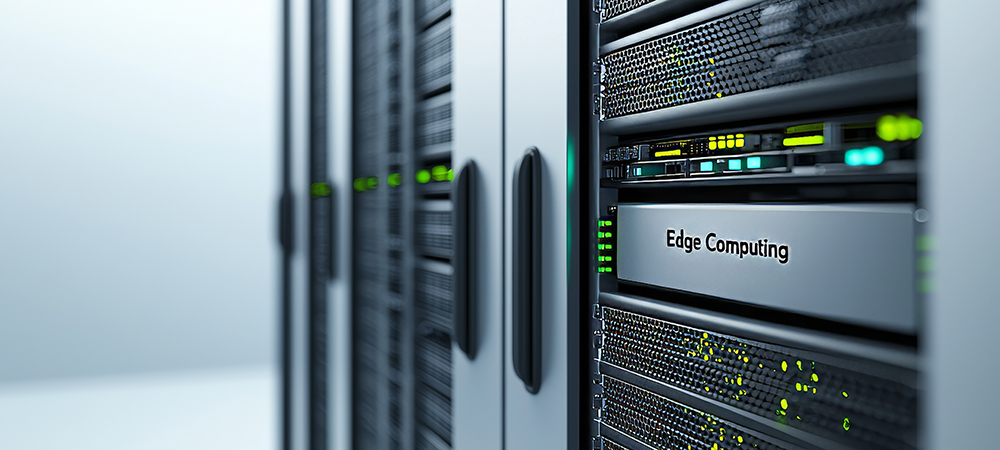AI promises to accelerate advanced automation to unprecedented levels creating a surge in demand for Edge computing. A substantial part of the demand for Edge computing will be comprised of GPU clusters to provide distributed AI inference, explains Pete Hall at Ciena.
Edge data centres are set to become an area of strategic growth as companies strive to minimise latency and enhance the end-user experience in the AI era. A forecast from IDC projects global spending on Edge computing to be $232 billion in 2024, an increase of 15.4% from last year.
In the Middle East, countries like the UAE and Saudi Arabia are investing in Edge data centres to support their digital ambitions and AI initiatives, addressing challenges related to application latency, data sovereignty, and sustainability of information and communications technologies.
In the past two decades, the world has seen an intense process of cloudification of IT infrastructure, with an increasing number of applications moving to the public cloud. The massive scale of cloud data centres with highly flexible consumption models has enabled a compelling business model for compute and storage workloads, effectively discouraging local builds.
However, centralised data processing means longer routes between users and content, and thus higher latency experienced by users accessing this content.
To remediate this issue, service providers have turned to content delivery network architectures, deploying cache servers closer to users, particularly targeting streaming video. This approach has been effective to improve user experience for streaming services, while also offloading some the network of some heavy traffic flows.
Nonetheless, it is only effective for frequently consumed repeatable data, like popular streaming videos, and not economically viable for random workloads.
Although content delivery networks have been the most widespread use case of Edge computing, a prominent and largely expected application of Edge computing has been its potential to accelerate automation and machine orchestration.

Machine decisions that need to be tightly synchronised require very low latency, in a level that a centralised compute infrastructure cannot deliver.
As AI promises to accelerate advanced automation in unprecedented levels, we are on the verge of a surge in Edge compute demand. And most likely, a substantial part of that Edge compute demand will be comprised of GPU clusters to provide distributed AI inference.
By accelerating the build of decentralised compute infrastructure, the UAE and Saudi Arabia can bolster the performance of AI-driven applications and boost the competitiveness of the region in this flourishing field.
In addition to delivering lower latency, this infrastructure can also help sensitive data stay in the region. AI models training, fine-tuning, or inference deals with data that might be preferred to be kept locally, rather than sent to a centralised location.
Even as core data centre buildouts continue to unfold across vast expanses of the world, the shift toward Edge data centres presents both challenges and opportunities. For instance, the environmental impact of data centres cannot be ignored. According to an International Energy Agency forecast, electricity consumption from data centres, cryptocurrencies, and Artificial Intelligence could double between 2022 and 2026.
Consequently, data centre projects are exploring various techniques to enhance sustainability in storage and processing to reduce the burden on existing power grids. This includes adopting the latest optical technology, implementing more efficient cooling methods, and utilising alternative power sources.
This is particularly critical in the Middle East, where there is heavy reliance on cooling systems to counter the effects of extreme heat. There is a shift to alternative power sources such as solar energy to enhance sustainability, with Masdar City in Abu Dhabi integrating sustainable practices into its data centre operations.
Delivering applications closer to the end user is a critical factor for AI applications. However, to realise these gains, the networks within, and between, data centres must be upgraded. Cutting-edge AI services cannot run inside everyday data centre servers; they need computers with high-performance graphics processing units, GPUs.
And those high-performance clusters of GPUs running AI services need high-speed networks to move AI-related data inside a data centre and then out to the wider world. Outside the site, high-speed and high-capacity data centre interconnect networks must remain front of mind for investment.
Regional telcos can capitalise on the proximity to end users and the ability to process data closer to the source to support a plethora of localised services. It will result in ever more responsive business decision-making and an explosion in service innovation.

Key takeaways
- IDC projects global spending on Edge computing to be $232 billion in 2024, an increase of 15.4% from last year.
- Centralised data processing means longer routes between users and content and higher latency experienced by users accessing content.
- Service providers have turned to content delivery network architectures, deploying cache servers closer to users.
- Content delivery networks are only effective for frequently consumed repeatable data, and not economically viable for random workloads
- Machine decisions that need to be tightly synchronised require very low latency, that centralised compute infrastructure cannot deliver.
- By accelerating buildup of decentralised compute infrastructure, UAE and Saudi Arabia can bolster performance of AI-driven applications.
- A substantial part of that Edge compute demand will be comprised of GPU clusters to provide distributed AI inference.
- Delivering applications closer to the end user is a critical factor for AI applications.
- AI services cannot run inside everyday data centre servers and need computers with high-performance graphics processing units.
- High-performance clusters of graphics processing units running AI services need high-speed networks to move AI-related data.
- High-speed and high-capacity data centre interconnect networks must remain front of mind for investment.
- Regional telcos can capitalise on the proximity to end users to process data closer to the source to support localised services.
- International Energy Agency forecasts, electricity consumption from data centres, cryptocurrencies, and Artificial Intelligence could double between 2022 and 2026.





